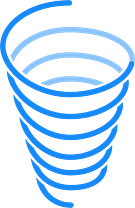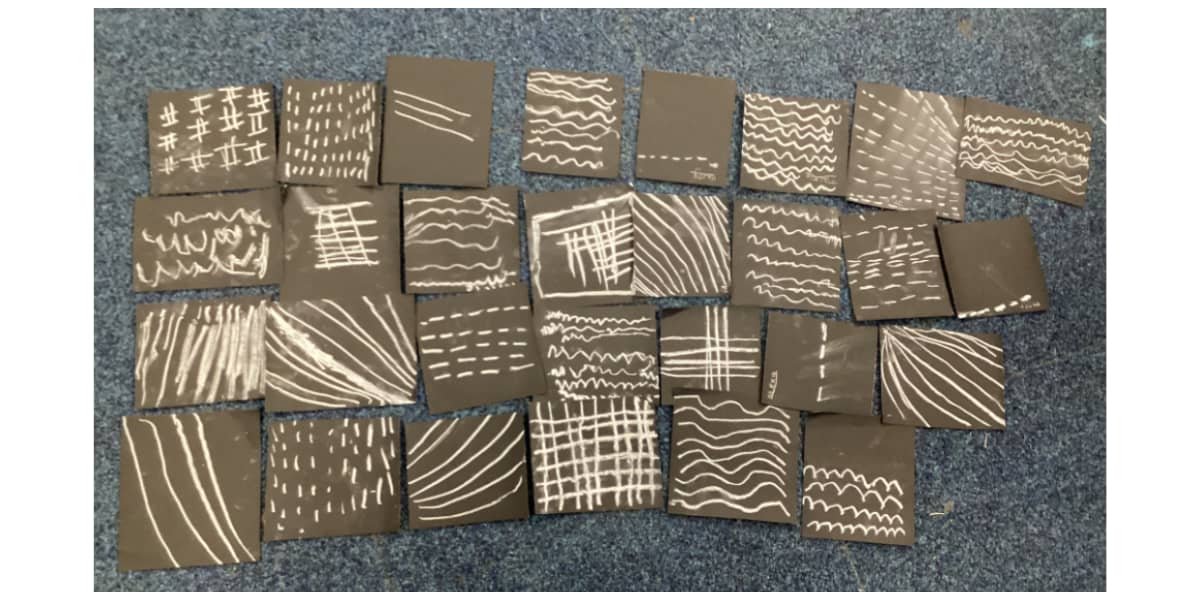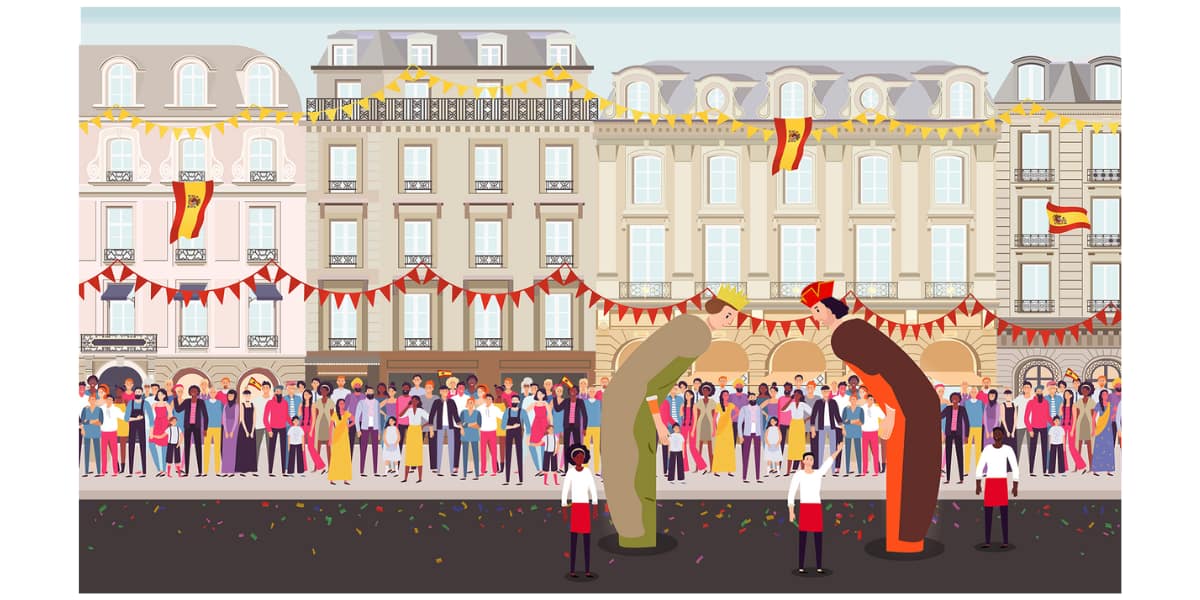Using A Spiral Curriculum Model To Enhance Learning
Written by Kapow Primary
Published on 12th May 2023
Last Updated: 7th March 2025
Written by Kapow Primary
Published on 12th May 2023
Last Updated: 7th March 2025

At Kapow Primary, our lesson planning adopts a spiral curriculum model; this is where key knowledge and skills are revisited and built on at a level appropriate to children’s development.

A spiral curriculum enables primary school teachers to introduce complex topics to young children in a way that is both accessible and engaging. This method builds a strong pedagogical foundation, which can be developed further as children progress through primary school.
Our units of work are designed for teachers to use sequentially to embed learning over time.
The concept of a ‘spiral curriculum’ is rooted in the work of cognitive psychologist Jerome Bruner, who was interested in developmental psychology and how children learn.
“We begin with the hypothesis that any subject can be taught in some intellectually honest form to any child at any stage of development.”
Jerome Bruner 1960. The Process of Education p33.
Although Bruner’s primary focus was mostly on knowledge and understanding, a spiral curriculum design can also be adapted for simultaneously developing subject-specific key skills.
Using a spiral curriculum in teaching does not result in children learning the same concepts over and over again. It’s about using what has already been taught to make connections between new concepts and previously learned material.
We believe a strong subject curriculum should be:
Think like an architect! It needs a clear and logical framework, with balanced coverage that reflects statutory requirements and best practices.
Ensuring purposeful learning that builds over time and is carefully sequenced to develop knowledge and skills.
It should work for every pupil. Additionally, content should represent a broad range of cultures, histories and perspectives.
Pupils should have opportunities to connect their learning, using skills learned within a subject. It’s also important to make links between different subjects, enhancing cross-curricular learning. Beyond this, a curriculum should support pupils’ personal development, oracy skills, and critical thinking.
Involve subject specialists and set high expectations with enough depth to encourage rigorous disciplinary knowledge.
A curriculum should be engaging, interesting, and inspiring for both pupils and teachers. It should spark curiosity and creativity.
You may have noticed these principles make a handy mnemonic of SPIRAL! Use them for guidance when planning and updating your subject curriculums.
Kapow Primary’s schemes of work have been designed using a spiral curriculum model with these key principles in mind across all our primary school foundation subjects. This ensures learning is:
Spiral curriculums help pupils to make connections between different concepts and apply their learning in different contexts; when they return to the concept each time, it is often in a different context. This helps to promote deeper understanding and transfer of learning.
Our long-term subject plans outline how a spiral curriculum is adapted for use in each different subject. They also demonstrate how our schemes of work fulfil the statutory requirements of the national curriculum (2014).
In a spiral curriculum, primary school children are introduced to a topic at a basic level, with the teacher gradually increasing the complexity of the concepts being taught. Here are some examples of how this happens in Kapow Primary’s planning.
In our Art and design scheme of work, this is the planned progression in drawing skills from reception through to Year 6:
| Reception | Explore mark-making, using a range of drawing materials |
| Year 1 | Use drawing tools in different ways to create lines and marks |
| Year 2 | Use different materials and marks to replicate the texture |
| Year 3 | Create tone by shading |
| Year 4 | Use pencils of different grades to shade and add tone |
| Year 5 | Draw the same image in different ways with different materials and techniques |
| Year 6 | Achieve the tonal technique called chiaroscuro |

Year 1 children making lines – Garswood Primary School
In History, children learn about substantive (abstract) concepts such as ‘monarchy’ or ‘empire’. These can be difficult to understand, especially in a historical context.
In Kapow Primary’s History scheme of work, Year 2 children learn what a monarch is.
As they move through different year groups, they are introduced to other models of leadership and sovereignty. They learn about:

In Year 2, children start learning about the concept of monarchy and build on this knowledge as they go through school.
When children gain knowledge about other leaders and leadership styles throughout history, they can relate it back to their prior knowledge, which started with learning about monarchy in Year 2.
We recommend a spiral curriculum approach for teaching foreign languages in primary schools. Unless children use the language they are learning all the time, the only way to really embed it and develop it further is by revisiting learning on a regular basis and applying it to new situations. This model is used throughout all our French and Spanish resources.
A spiral curriculum design benefits children as it allows them to revisit existing learning in a way that is already familiar to them. Our learning resources all follow a similar structure, making it easy for children to get started on a new unit of work very quickly.
Kapow Primary’s spiral curriculum design lends itself to adaptive teaching methods, as it starts by revisiting prior learning.
Children have multiple opportunities to master new skills and gain confidence in their abilities as they revisit and build upon previously taught concepts.
Additionally, the spiral approach allows teachers to scaffold learning, providing additional support and guidance to pupils as needed.
This can help those who struggle with certain concepts or skills to gradually build their understanding and become more successful learners over time.
The spiral approach allows for formative assessment.
By revisiting topics multiple times, teachers can assess children’s understanding and adjust their instruction to ensure that the children are making progress and achieving an understanding of key concepts.
If a summative assessment shows that they haven’t understood something, then next time that concept is covered, teachers can address that need rather than it never being revisited again.
You can assess pupil progress by using Kapow Primary’s assessment tools such as our end-of-unit quizzes, knowledge catchers or formative assessment grids.

Assessment resources from our Year 5/6 History unit: What did the Greeks do for us?
Using a spiral curriculum approach helps schools to evidence the current focus on knowledge retention.
“(Teachers) deliver the subject curriculum in a way that allows pupils to transfer key knowledge to long-term memory. Teaching is sequenced so that new knowledge and skills build on what has been taught before and pupils can work towards clearly defined end points.”
Ofsted school inspection handbook 2022
Overall, the spiral curriculum is a powerful teaching methodology that can help primary school children build a solid base of knowledge and skills. By constantly revisiting and building on concepts that have already been introduced, pupils are able to deepen their understanding of the subject matter over time. It’s an effective method to support children in making progress.
“All pupils make progress, in that they know more, remember more and are able to do more.”
Ofsted school inspection handbook 2022